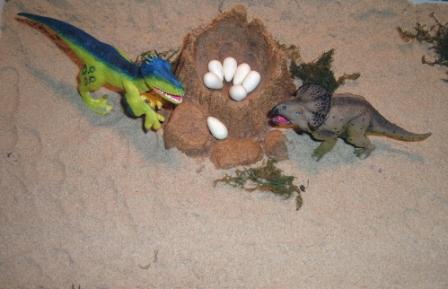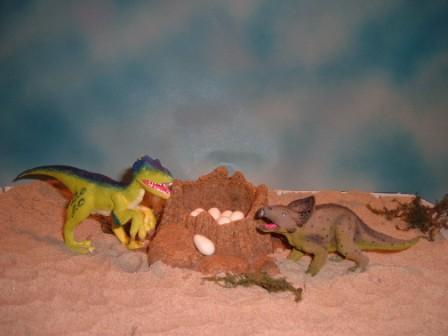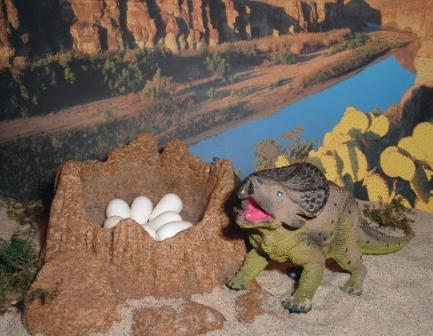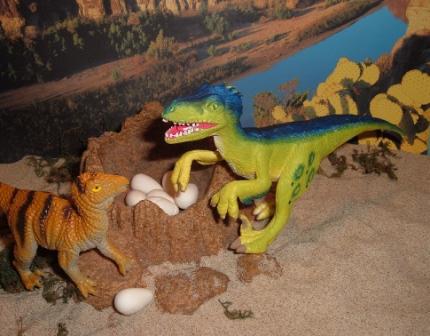Late Cretaceous
Mongolia
The Santonian.
This Late Cretaceous Djadokhta formation has also produced skeletal finds for Protoceratops, Pinacosaurus and Velociraptor and other ankylosaurs, ceratopsian and theropods. Many examples of turtles, crocodiles, lizards and mammals have been found. The relatively low diversity and lack of large specimens suggests that the environment was one of considerable stress.
Updated 092714
Protoceratopsids were small (3 - 8 ft), primitive ceratopsians with 4 clawed toes, 5 fingered hands and a typical frill formed from the parietal bone, but with poorly developed horns or bumps in place of horns.
 |
 |
They were quadrupedal herbivores known mostly from Asia, particularly Mongolia. The frill varies from small and without openings in Leptoceratops to large with many holes as in Protoceratops. They are abundant in Asia but relatively rare in North America and elsewhere.
Velociraptor had an elongated hand and forelimb that provided much greater reach in predation.
 |
 |
As tVelociraptor reached forward, the hands could also swing up and outwards, a movement not possible in earlier theropods, and functionally identical to the wrist movement of birds during flight.
